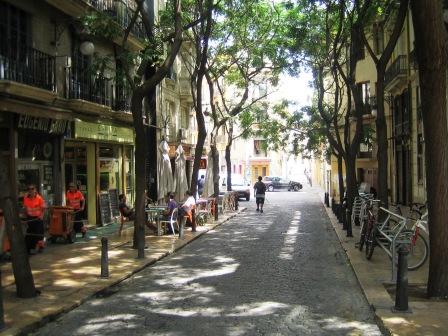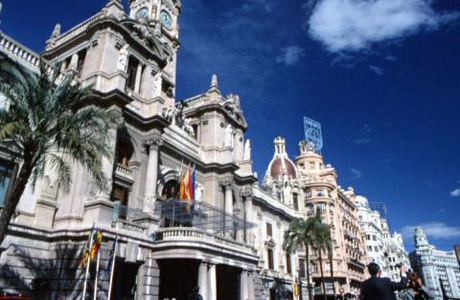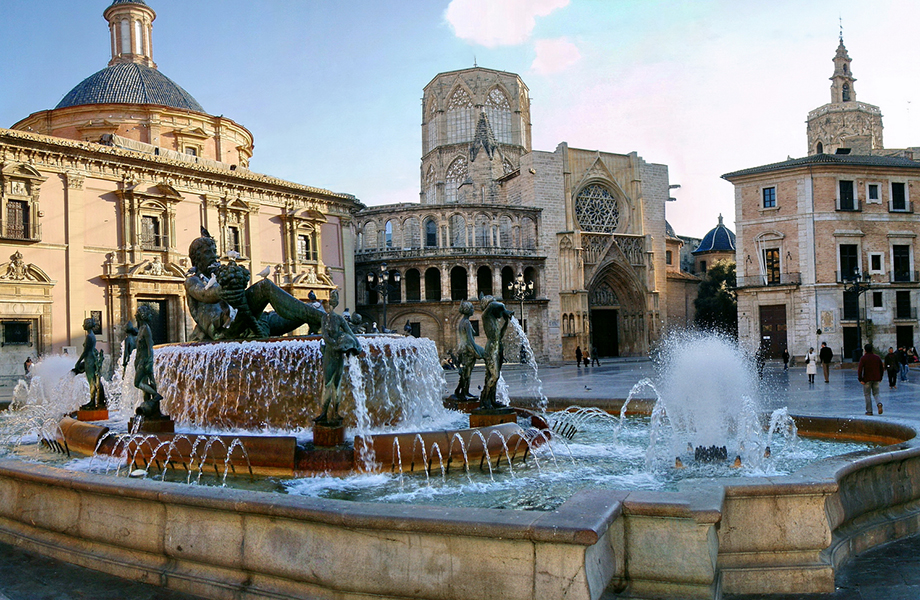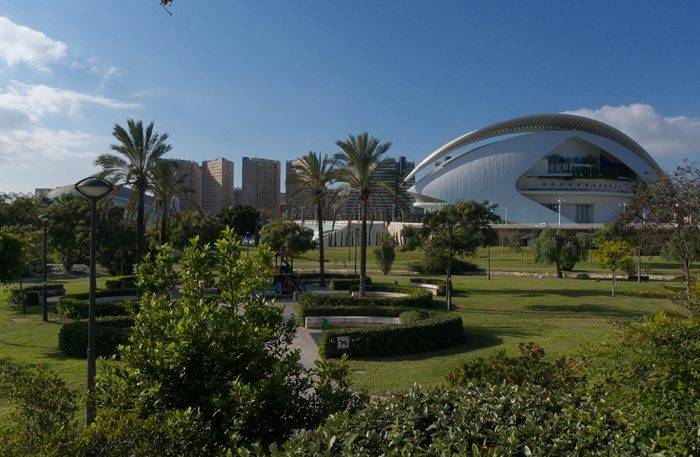Take a look at this second tour of Valencia to stroll through popular plazas and experience the Ciutat Vella.
For those looking to explore the city on foot, follow one of our suggested tours in Valencia, so you don’t miss a thing! Enjoy Valencia by discovering the beauty and peculiarity of the historical centre of the city and explore all the things to do in Valencia.
Valencia City Walking Route
Here is a second route to explore the Ciutat Vella of Valencia that takes you through the historical centre of the city.
The journey will begin at the intersection of Calle Quart and Calle Guillen de Castro from the Quart Towers, the gates that were part of the medieval wall surrounding the city. This is also the point where the Barrio del Carmen begins, one of the most popular parts of city and which is a cultural centre for shopping and entertainment nowadays. The buildings of historical and cultural importance that stand out among all of them are:
The Serrano Towers
The Towers of Quart
Centro Cultural de la Beneficiencia
The House Museum of painter José Benlliure
El Portal de Valldigna
The Church of Carmen
The Valencian Institute of Modern Art
Church of Carmen in Valencia
Facade of the Church of Carmen
Moving on from the Barrio del Carmen, following Calle de la Bolsería, you will pass the Mercado Central (the Central Market), a metal building of modernist style that was opened in 1929 and is one of the largest indoor markets in Europe.
In front of the Mercado is the Lonja de la Seda (the Silk Market), defined as a jewel of the Gothic Civil European era and a World Heritage site in Valencia that was built between 1483 and 1498. Its beauty can be noted by the helical column structures that open like palm trees and the inclusion of Latin decor around the room.

From here we continue the tour, heading towards the Plaza del Ayuntamiento (via the Calle de Maria Cristina), the most important square in central Valencia. Its triangular shape acts as the heart of the popular festival of Las Fallas. In this square the “mascletas” (fireworks and bangs) are celebrated daily during the festival season and prizes are handed out during the parade. The parades consist of the falleras or falleros where people are dressed in traditional costumes. The square is bordered to the north by Calle Maria Cristina and Calle de San Vicente, and to the south by Calle Xàtiva, the Estación del Norte, and the Plaza de Toros (the Bullring)- another milestone of our journey.
Here you can find the Bullfighting Museum and learn about the history of bullfighting in Valencia. From this museum, Calle Ciril Amorós will take us directly to the Mercado de Colón (Colon Market) and to the Palace of Marques de Dos Aguas that houses the Museo Nacional de Cerámica González Martí.
Barely a kilometer away from the museum is the next stop of the journey, the historical Conjunto de San Juan del Hospital. This includes a church and a museum dedicated to the saint. The tour concludes 200 meters away from the hosipital at the Casa del Almirante de Aragon, located at number 14 Calle de Palau, which for centuries had been the residence of the nobles.






